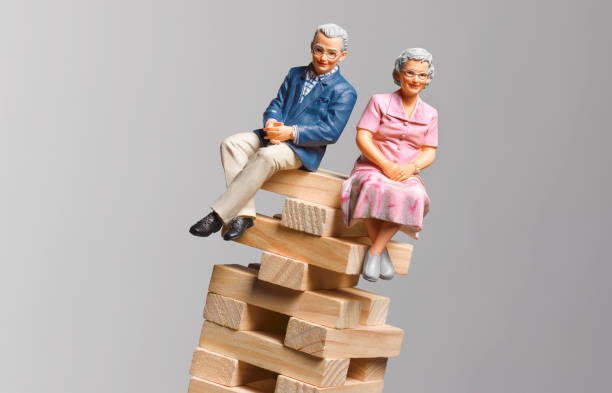 The state of overextension is the precarious tipping point where personal debt ceases to be a manageable tool and transforms into an all-consuming master. It is not defined by a specific dollar amount, but by a relationship—a dynamic where financial obligations dictate life’s choices, stifle opportunity, and cast a long shadow of anxiety over the present and future. This condition represents a fundamental loss of agency, where income is merely a pass-through for creditors, not a means to build a life.The journey into overextension is often gradual, a slow accretion of necessary and aspirational debts that eventually surpass income. Student loans, car payments, and mortgages layer upon high-interest credit card balances accrued from covering everyday shortfalls or unexpected emergencies. The initial strategy of managing minimum payments works until it doesn’t; a single financial shock—a job loss, a medical bill, a major repair—shatters the fragile equilibrium. Suddenly, the debt is not just a burden but an inescapable trap.The consequences of this state are profound and multifaceted. Psychologically, it breeds a constant, low-grade stress that erodes well-being, disrupts sleep, and strains personal relationships. Practically, it acts as a relentless constraint on life’s trajectory. The freedom to change careers, pursue education, relocate, or even start a family is surrendered to the imperative of the monthly payment. Every decision is filtered through the narrow lens of affordability, sacrificing long-term goals for short-term survival.Financially, overextension triggers a vicious cycle. High debt-to-income ratios damage credit scores, making new credit more expensive or inaccessible, and locking individuals into their current high-interest obligations. Money that should be flowing into savings, investments, or retirement accounts is forever diverted to servicing past consumption, creating a devastating opportunity cost that compounds over time. Thus, overextension is not a static condition but a downward spiral, trading present-day consumption for future insecurity and systematically dismantling the possibility of wealth building. It is a quiet, pervasive crisis that defines lives not by their potential, but by their liabilities.
The state of overextension is the precarious tipping point where personal debt ceases to be a manageable tool and transforms into an all-consuming master. It is not defined by a specific dollar amount, but by a relationship—a dynamic where financial obligations dictate life’s choices, stifle opportunity, and cast a long shadow of anxiety over the present and future. This condition represents a fundamental loss of agency, where income is merely a pass-through for creditors, not a means to build a life.The journey into overextension is often gradual, a slow accretion of necessary and aspirational debts that eventually surpass income. Student loans, car payments, and mortgages layer upon high-interest credit card balances accrued from covering everyday shortfalls or unexpected emergencies. The initial strategy of managing minimum payments works until it doesn’t; a single financial shock—a job loss, a medical bill, a major repair—shatters the fragile equilibrium. Suddenly, the debt is not just a burden but an inescapable trap.The consequences of this state are profound and multifaceted. Psychologically, it breeds a constant, low-grade stress that erodes well-being, disrupts sleep, and strains personal relationships. Practically, it acts as a relentless constraint on life’s trajectory. The freedom to change careers, pursue education, relocate, or even start a family is surrendered to the imperative of the monthly payment. Every decision is filtered through the narrow lens of affordability, sacrificing long-term goals for short-term survival.Financially, overextension triggers a vicious cycle. High debt-to-income ratios damage credit scores, making new credit more expensive or inaccessible, and locking individuals into their current high-interest obligations. Money that should be flowing into savings, investments, or retirement accounts is forever diverted to servicing past consumption, creating a devastating opportunity cost that compounds over time. Thus, overextension is not a static condition but a downward spiral, trading present-day consumption for future insecurity and systematically dismantling the possibility of wealth building. It is a quiet, pervasive crisis that defines lives not by their potential, but by their liabilities.
While personal loans can lower interest rates, they often require good credit. If used without addressing spending habits, borrowers may end up with both a new loan and new credit card debt, worsening overextension.
An ideal candidate has a steady income, possesses primarily unsecured debt, and is struggling with high interest rates and fees but can afford to make a consolidated monthly payment that is less than what they were paying individually to all their creditors.
Common causes include unpaid taxes, defaulted student loans, child support or alimony arrears, and court judgments from credit card debt, personal loans, or medical bills.
Commit to one small action. This could be ordering your credit report, writing down all your debts on a single piece of paper, or calling a non-profit credit counseling agency. One step forward can build momentum and diminish feelings of helplessness.
Most negative items, like late payments, charge-offs, and collections, remain for seven years from the date of the first missed payment. A Chapter 7 bankruptcy can stay for up to ten years.